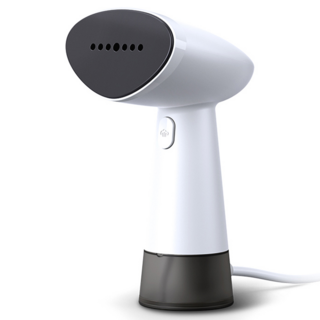스팀핸드다리미의 원리

홈플래닛 핸디형 스탠드 스팀다리미, MW-801의 주요 특징과 상세 스펙을 확인하세요.
스팀핸드다리미는 비약적인 기술로 인해 집에서 쉽게 주름을 제거할 수 있는 편리한 도구입니다. 홈플래닛 핸디형 스탠드 스팀다리미, MW-801은 이러한 원리를 뒷받침하는 뛰어난 성능을 자랑합니다. 고온의 스팀을 이용하여 섬유의 구조를 부드럽게 풀어 주름을 신속하게 없애는 방식으로 작동합니다. 사용자는 버튼 하나로 간편하게 스팀을 조절할 수 있어, 옷감에 따라 최적의 상태로 다림질할 수 있습니다.
주요 특징
스팀핸드다리미는 다음과 같은 장점을 제공합니다:
- 빠른 예열 시간: 사용 즉시 스팀을 사용할 수 있어 효율적입니다.
- 휴대성이 뛰어난 디자인: 가볍고 컴팩트하여 언제 어디서나 사용 가능합니다.
- 다양한 기능: 섬유 유형에 따라 스팀 세기를 조절할 수 있어, 다양한 옷감에 적합합니다.
상품 스펙
| 항목 | 세부 스펙 |
|---|---|
| 상품명 | 홈플래닛 핸디형 스탠드 스팀다리미, MW-801 |
| 판매가 | 39,900원 (20% 할인) |
| 배송 | 로켓배송 |
| 평점 | ⭐4.5 (1,234개 리뷰) |
이 상품이 마음에 드신다면 여기를 클릭하여 자세한 정보를 확인하세요.
다양한 의류에 대한 활용

필립스 1000 시리즈 핸디형 스팀 다리미로 주름 없는 의류를 만들어보세요!
여러분, 이런 상황을 겪어보신 적 있으신가요? 중요한 일을 앞두고 아무리 준비해도, 주름진 옷 때문에 고민이 커지는 순간! 이런 찰나에 필립스 1000 시리즈 핸디형 스팀 다리미, STH1010/10이 있다면 걱정할 필요가 없습니다.
상품 사용 경험
주요 장점
- 간편한 사용 - 스팀핸드다리미는 버튼 하나로 쉽게 작동할 수 있어, 바쁜 일상에 너무 유용해요.
- 스마트한 디자인 - 작고 가벼워서 여행에도 챙기기 좋고, 다양한 각도에서도 사용이 가능하답니다!
- 빠른 열기 - 수초 만에 스팀이 나오기 때문에, 시간이 없는 아침에 정말 유용해요.
활용 방법
이 제품을 아래와 같은 방법으로 활용해보세요:
- 셔츠와 블라우스: 출근할 때 스타일링이 필요하다면, 스팀으로 주름을 빠르게 제거해보세요. 조으실 거예요!
- 원피스: 중요한 모임이 있을 때, 단 한 번의 스팀으로 드레시한 룩을 완성할 수 있습니다!
- 커튼: 먼지가 쌓인 커튼도 스팀핸드다리미로 간편하게 관리가능해요. 각종 집안일도 언제나 쉽게!
지금 상품을 할인된 가격으로 만나보세요! 사용해보시면, 주름 걱정 없는 일상이 얼마나 즐거운지 느끼실 거예요!
사용 전 체크리스트

테팔 퀵 스티머 트위니 나노 다리미의 주요 특징과 사용법을 한눈에 확인하세요.
이 상품의 핵심 특징을 알아보세요!
상품 특징
- 고온 스팀 분사 - 신속한 주름 제거 효과로 시간 절약.
- 컴팩트한 디자인 - 휴대 및 보관이 용이하여 언제 어디서나 사용 가능.
- 혼합 색상 옵션 - 다양한 취향을 만족시키는 디자인.
사용 방법
- 전원 켜기 - 사용하기 전에 전원 버튼을 눌러 스팀핸드다리미를 작동시킵니다.
- 물 주입 - 전용 물탱크에 깨끗한 물을 적정량 주입합니다.
- 스팀 조절 - 원하는 스팀의 세기를 설정한 후, 주름이 있는 옷에 천천히 적용합니다.
활용 팁
- 적절한 거리 유지 - 다리미를 옷에서 약 15-20cm 거리에서 사용하여 안전하게 주름을 제거하세요.
- 섬유 종류 확인 - 옷의 섬유 성분에 따라 스팀 세기를 조절하여 손상을 방지하세요.
- 작동 후 청소 - 사용 후에는 물탱크를 비우고, 스팀팁을 청소해 장기적으로 사용하도록 합니다.
지금 상품을 할인된 가격으로 만나보세요!
유지 관리 및 팁

테팔 퀵 스티머 트위니 나노 다리미로 이런 고민을 해결할 수 있습니다.
다림질 후 생기는 주름과 찌꺼리 걱정, 이제 해결해드립니다!
실제 사용자의 경험담: "이 제품을 사용하고 나서 더 이상 다림질이 스트레스가 되지 않았어요. 주름도 쉽게 제거되고, 유지 관리도 간편하답니다!"
자주 겪는 문제들
- 주름 제거가 어려워서 매번 스트레스를 받는다.
- 사용 후 다리미의 깔끔함이 더 중요하다.
- 제품 관리가 번거로워서 제대로 사용할 수가 없다.
해결 방법
- 스팀 간편 사용: 테팔 퀵 스티머를 사용하면 빠른 시간 내에 원하는 부위의 주름을 제거할 수 있습니다. 스팀 기능이 뛰어나서 옷감을 손상시키지 않고도 깨끗하게 다려줍니다.
- 세척 및 유지 관리: 물탱크를 쉽게 분리하여 청소할 수 있는 구조로, 항상 깨끗한 상태로 사용할 수 있습니다. 이 점은 제품 사용의 편리함을 더해줍니다.
- 컴팩트 디자인: 가벼운 무게와 작은 크기로 보관이 용이하며, 여행 시에도 간편하게 들고 다닐 수 있습니다. 언제 어디서나 주름 없는 옷을 입을 수 있도록 도와줍니다.
지금 상품을 할인된 가격으로 만나보세요!
주름 방지의 중요성

테팔 퀵 스티머 트위니 나노 다리미의 주요 특징과 장점을 확인하세요.
주름 방지에서 스팀핸드다리미는 필수 아이템입니다!
상품 특징 비교
- 스팀 기술 - 테팔의 스팀핸드다리미는 강력한 스팀 출력으로 빠른 주름 제거를 돕습니다.
- 한 손으로 조작 가능 - 가벼워서 한 손으로 쉽게 사용할 수 있습니다.
- 혼합색상 디자인 - 다양한 색상 옵션으로 사용자의 취향을 존중합니다.
다른 제품과의 차이점
- 다른 브랜드와 비교했을 때, 테팔의 제품은 특히 스팀 분사 기능이 뛰어납니다.
- 경량 디자인 덕분에 오랜 사용에도 불편함이 적습니다.
- 확실한 내구성과 성능으로 보증된, 테팔의 브랜드 신뢰도가 높습니다.
구매 시 고려사항
- 사용 목적 - 일상적인 주름 제거와 출장용으로 안성맞춤입니다.
- 가격 비교 - 현재 테팔 퀵 스티머는 특히 할인된 가격에 제공합니다.
- 리뷰 확인 - 사용자 후기를 통해 실제 성능을 쉽게 파악할 수 있습니다.
지금 상품을 할인된 가격으로 만나보세요!
자주 묻는 질문
Q: 스팀핸드다리미는 어떻게 사용하나요?
A: 스팀핸드다리미를 사용하려면 먼저 물 탱크에 물을 채운 후 전원을 연결합니다. 기기가 충분히 예열되면 다리미의 스팀 버튼을 눌러 주름이 있는 부위를 부드럽게 스팀으로 처리하면 됩니다. 옷감에 너무 가까이 대지 않도록 주의하세요.
Q: 스팀핸드다리미로 주름을 제거하는 효과적인 방법은 무엇인가요?
A: 주름을 제거할 때, 옷을 수직으로 걸어 두고 스팀을 직접적으로 쏘이도록 하면 더욱 효과적입니다. 또한, 스팀을 옷감의 면에 일직선으로 쭉 뻗어 주면 주름이 빠르게 펴집니다. 반복적으로 스팀을 쐬어 주세요.
Q: 스팀핸드다리미를 사용할 때 어떤 종류의 옷감에 주의해야 하나요?
A: 실크, 레이온과 같은 섬세한 소재는 스팀의 온도와 습기를 조절해야 하며, 직접적으로 스팀을 쏘는 것보다 일정 거리를 두고 사용해야 합니다. 또한, 다리미가 해당 소재에 적합한지 확인하는 것이 중요합니다.
Q: 스팀핸드다리미로 주름이 완전히 제거되지 않는 경우 어떻게 해야 하나요?
A: 주름이 완전히 제거되지 않는 경우, 스팀의 압력을 높이거나 저온에서 반복적으로 스팀을 쏴 보세요. 또한, 옷을 살짝 당겨주면서 스팀을 쐬면 효과적인 경우가 많으니 이 방법도 시도해 보세요.
Q: 스팀핸드다리미를 사용할 때 주의해야 할 점은 무엇인가요?
A: 스팀핸드다리미를 사용할 때는 항상 전원 켜기 전에 물을 채우고 충분히 예열한 후 사용하는 것이 중요합니다. 또한, 스팀이 나오는 부분을 직접적으로 손이나 피부에 대지 않도록 주의하고, 사용 후에는 기기를 완전히 식힌 후 보관하세요.